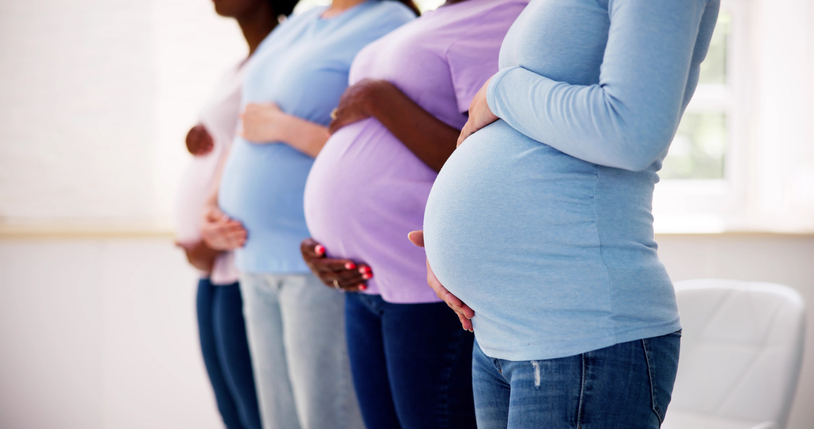Pregnancy “Safety Bundles” Can Protect You and Your Baby – What You Need to Know

By Joy Stephenson-Laws, JD, Founder
Standardizing treatment for specific health conditions has been shown to improve quality of care. This approach helps ensure consistency in the development and application of treatment plans across patient demographics. It also helps reduce any unconscious bias or stereotypes that may creep into treatment or diagnostic decisions that then may impact patient outcomes. When grouped together, these standardizations are known as “safety bundles.”
While not new, they are increasingly being used to help address the growing incidence of maternal deaths and pregnancy-related complications, especially among specific groups of women. These include Black, American Indian and Alaska Native women, who are at least twice as likely as their white counterparts to die from pregnancy and delivery-related risks. The pregnancy safety bundles aim to reduce these risks by improving maternal health and reducing disparities and inconsistencies in obstetric care.

The importance – and potential positive benefits of these “pregnancy safety bundles” – becomes clear if you consider that according to the U.S. Centers for Disease Control and Prevention (the CDC), more than 80 percent of maternal deaths may be preventable. The risks that these pregnancy safety bundles address include some of the most common underlying causes of pregnancy-related complications in the U.S., including:
- Excessive blood loss, which is the leading cause of death during birth and one of the leading causes in the days following birth.
- Cardiovascular conditions such as heart disease and heart failure, high blood pressure (preeclampsia and eclampsia), blood clots and strokes.
- Gestational diabetes, which affects up to 10 percent of pregnancies, may require a modified diet or insulin, and which usually resolves itself after the pregnancy.
- Opioid and other drug use disorders that can negatively impact the health of both mother and baby during and after pregnancy.
- Preterm labor, defined as going into labor before 37 weeks before a baby’s organs are developed, may require bed rest.
- Labor that begins but does not progress, which requires medications or a cesarean delivery.
- Perineal tears that may require stitches or other interventions.
While these pregnancy bundles are indeed important to providing improved maternal care, there is also a lot that you can do to increase the probability that you will have a healthy pregnancy and birth while reducing the risk of complications for you and your newborn. These include:
- Eating a primarily plant-based diet with lean protein.
- Avoiding processed foods, sugary drinks, food with refined sugar (think cakes and donuts), fried foods.
- Managing your pregnancy-related weight gain to 25 to 30 pounds (check with your doctor).
- Taking all prenatal vitamins and/or supplements as directed by your doctor.
- Limit your daily intake of caffeine from all sources and not just coffee or tea.
- Quitting smoking if you smoke, and avoiding alcohol and recreational drugs.
- Reducing your stress levels as much as possible (I used walking and music during my pregnancy).

It’s also important that you continue to exercise (or start to exercise) after consulting with your obstetrician. Physical activity is so important for a healthier pregnancy that it is endorsed by the American College of Nurse Midwives, The American Congress of Obstetricians and Gynecologists and the Society for Maternal and Fetal Medicine. General guidance is to try and do moderate exercise for 30 – 50 minutes on most days.
I would also add to exercise the importance of getting enough sleep. This is the time to listen to your body more than ever, so if you’re tired during the day it’s totally fine to take a nap.
Finally, be sure to work closely with your healthcare provider especially if you have medical conditions that could complicate your pregnancy. These include having diabetes, high blood pressure, kidney problems, anemia, epilepsy, a history of miscarriage, being over the age of 35 or have an eating disorder. Also get in touch immediately with your doctor should you have bleeding from the vagina, pain in your abdomen, swelling, dizziness, blurred vision or fever.
Enjoy your healthy life!
Disclaimer: This article is not intended to provide medical advice. Please consult with your doctor or another competent healthcare practitioner to get specific medical advice for your situation.
The pH professional health care team includes recognized experts from a variety of health care and related disciplines, including physicians, attorneys, nutritionists, nurses, and certified fitness instructors. This team also includes the members of the pH Medical Advisory Board, which constantly monitors all pH programs, products, and services. To learn more about the pH Medical Advisory Board, click here.







